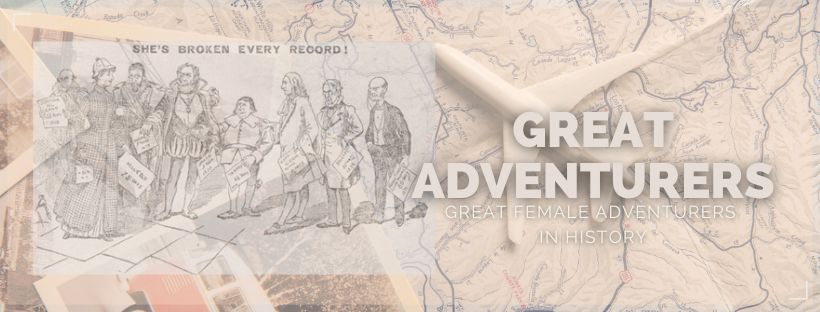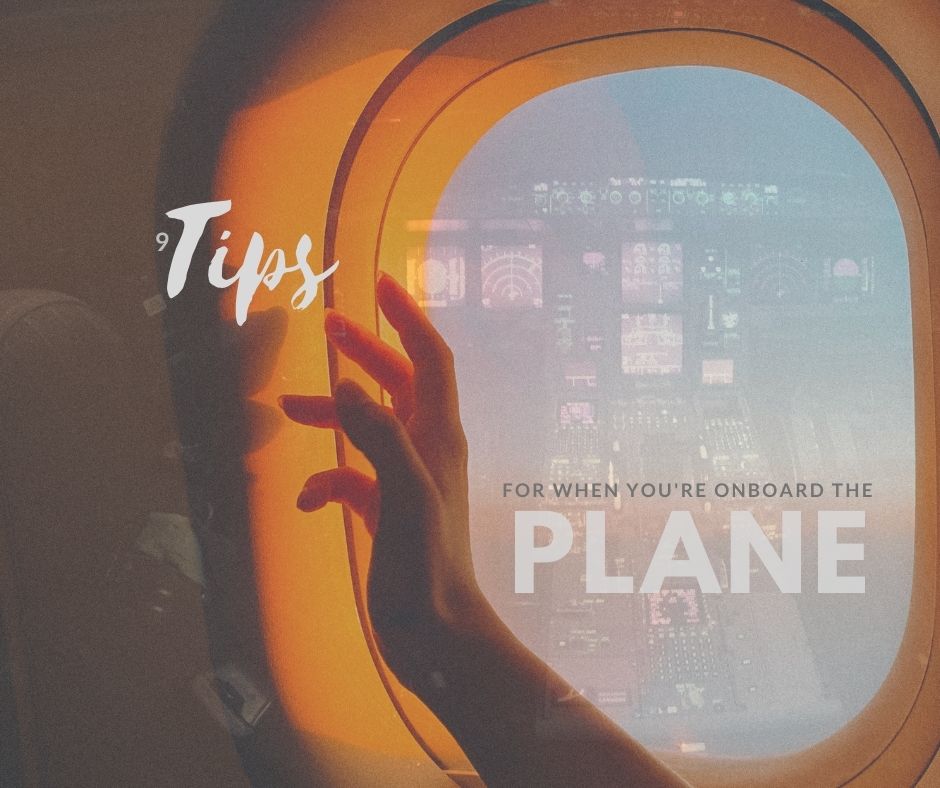Great female adventurers in history

A little inspiration goes a long way! I feel like today is a perfect day to take a glympse back to the past and commemorate some corageous ladies who deserve the title of great female adventurers for they changed the history of travel and adventure. When I read about them, I feel inspired to put my ideas into action, planning new adventures, accomplishing great projects, breaking sexist barriers which still today prevail. The fight for equality is not over yet. I would love to dedicate this little space to the great female travellers and adventurers of all times, from the beginning until today, for anything that makes you feel brave is great. Amelia Earhart 1897, Kansas, USA: a writer, equal rights advocate and pioneer in aviation was born. Amelia was the first woman in history to fly across the Atlantic as a passenger, only to later become the very first woman to fly solo crossing the Atlantic in 1932. Five years after her intrepid adventure, and in the company of Fred Noonan, she aimed to be the first woman to fly around the world. After a stop in New Guinea, they flew towards the end of their journey which unfortunately became the end of their known whereabouts. Weeks before her fortieth birthday, Amelia, her travel partner and their plane disappeared, never to be found, somewhere in the Pacific, and close to the islands Howland and Baker (known to be the first to see the new day). After so many years, such strange event continues to be investigated and considered of public interest. Amelia wrote best-selling books about her flying experiences, promoted commercial flying, and was an essential figure in the creation of The Ninety-Nines, an organization for women pilots. Egeria As I am a little curious, I want to see everything Spanish stamps collection dedicated to Egeria Known as the first great female traveller and pilgrim, and the first to document her adventure, Egeria (Eteria or Etheria) travelled from Europe to the Holy Land, using the Bible as her guide for an adventure of thousands of kilometres. She is considered pioneer in travel literature. Her writing -fresh, simple and personal- reveals a cultural sensitivity that transcends time; she shows genuine care and interest to know about local customs and traditions on every stop. From the fourth century, and of Hispano-Roman origin, her manuscript, Itinerarium ad Loca Sancta, is written in vulgar latin, common in her times. She describes places, her way to travel and where she slept, many times accepting the hospitality of the locals. Her journey took place between 381 and 384, departing from what now is France, through Northern Italy, crossing the Adriatic, to arrive to Constantinopla. It is believed that being of high class and educated, she must have had a safe-conduct or some sort of official document which allowed her to cross frontiers and get military protection in dangerous areas. She travelled through Turkey, Palestine, Israel, Egypt, Jordan and Siria, visiting places like Mount Sinai, from where she wrote on Saturday, December 16th 383: and early on the Lord’s Day, together with the priest and the monks who dwelt there, we began the ascent of the mountains one by one. These mountains are ascended with infinite toil, for you cannot go up gently by a spiral Elizabeth Jane Cochran 1864, Pennsylvania, USA: an equal rights advocate, pioneer in undercover journalism and traveller was born in a family of fourteen siblings. Pinky, as some called her for wearing that color often, abandoned university after one semester due to shortage of money, and wrote a letter to Pittsburgh Dispatch regarding a sexist column in the newspaper. The editor who hired her as a reporter and writer, gave her the pseudonym for which she’s known, Nellie Bly, because of Stephen Foster‘s song with the same name. After some time, she moved to New York, where she worked for Pulitzer, at the New York World newspaper. Her first job consisted in writing an article on Blackwell’s psychiatric house. To write it, she practiced her acting skills and pretended to be afraid and suffer amnesia while staying at a pension. They immediately took her as a crazy person and got her into the madhouse. She exposed herself to the real conditions and abuse that patients suffered, and wrote about her experience in Ten Days in a Madhouse, reporting the administration behaviour and pushing for an official investigation turning into drastic measures of change. And thus, she became the very first investigative journalist. Her style, articles, and feminist view of the world pushed her to embark in adventures and projects that would normally be reserved for the men. She proposed the newspaper she was working for to make Julio Verne’s novel a reality. After getting a negative for an answer for being a woman and needing too much luggage, she communicated that she would just pursue her goal with another newspaper. Then, they decided to support her. She travelled with a dress, a coat and some basic needs goods for about forty thousand kilometres, most of them on her own. One of her stops was in Amiens, as Julio Verne and his wife had invited her over to meet her and hear about her expedition. In 1889 she established a new record going around the world, arriving to New York 72 days, 6 hours and 11 minutes after her departure. After these endeavors, Elizabeth took charge of her passing husband’s business, carrying out health, hourly and salary reforms; she wrote, and became a World War I reporter in Europe, becoming one of the earliest known female war correspondents in history. Elizabeth Bessie Coleman 1892, Texas, USA, to an African-American mother and Cherokee father, the tenth of thirteen siblings was born. Elizabeth grew up with her family and going to church, helping at home and at the cotton fields, and walking six kilometres and a half to get to the segregated school she attended. When she turned eighteen, she studied at university for a year, having
9 tips for when you’re onboard the plane

When you spend some good amount of hours onboard an airplane to get to your destination, it is good to keep a few things in mind, like staying healthy, resting well or having things to do if you’re unable to sleep. Here are nine tips for you to remember for your next journey, especially if you’re on a long haul flight!! 1. Take some entertainment with you Even if you’re travelling internationally and expect the plane to have entertainment, a movie on your cellphone, some music or a good book won’t weight too much and can save you some boring times if you’re unable to rest. *Check how your airline works for entertainment before departure. Some require downloading an application before hand, to then access the options via «in-flight mode» and Wi-Fi. 2. Stay hydrated Drink water. Don’t be ashamed to ask the crew members to please bring you water – don’t forget it is a basic need! Also, bringing a small water bottle with you to refill once you pass security, will help you and save you some coins. *Remember that unfortunately not all airports have drinking water, and use their fountains when they do! 3. Keep your most important belongings with you It is practical to have a small purse inside your main carryon, with your passport, important documents, cards, money or cellphone. That way, when you get on the aircraft, your just put your main carryon on the overhead compartment, and your little purse with you on your seat. 4. Get your sleeping gear ready! If you can, get some good rest. If you can’t, try again; and at least close your eyes to relax. Your body and mind will appreciate it. The sleeping mask is a must on each of my trips. If you’re not yet used to it, doing worry, you will! I sometimes take an inflatable pillow (they take less space in your backpack/ luggage). Ear plugs or headphones are also quite recommended, especially when you suffer light sleep or have noisy neighbours! 5. Get comfy Forget high heels, tons of make-up, lots of jewelry or any clothing or hair-do that will end up making you uncomfortable. Choose to wear certain tights, lose pants or even in some cases shorts (I may have traveled with shorts twice or three times in my life… It was good! But some planes keep the AC quite high during the entire flight!). Haven’t yet tried the compressive tights, but will let you know my opinion when I do. I usually take off my shoes once seated, loosen my hair, sit back and relax. 6. Bring extra clothing Especially when it is a long haul flight, it is good to freshen up and wear something clean, as you can end up spending two days travelling in some journeys. You don’t wanna be wearing the same underwear all of that time! If your airport has showers, take advantage of them, you will immediately feel and appreciate the difference. However long the flight may be, take at least a light jacket with you. Some companies put the AC really high. Also, when you’re tired, you become more sensitive to temperature changes. 7. Bring a snack Don’t be afraid to take out your sandwich when up in the air. Meals are included in intercontinental flights (re-check with your company anyway), and also in some international flights. It is still good, practical and economic to bring your own sandwich. If you end up not consuming it during your flight, you can always have it for dinner. *Please, if you are really hungry and forgot to prepare a sandwich, use the good service onboard. Don’t be hungry just to save! 8. Freshen up! Stand up, go for a walk, exercise your legs and change positions. Use the toilet facilities, wash your face. And do all of these things more often than usually. The pressure or dryness of the air, not being able to have your legs up or being in a reduced space, are unordinary situations for your body. Listen to it and treat yourself right. 9. Be civilized and respectful Please, don’t be the annoying brat on the plane. Be civil. Don’t get on a plane to get drunk. It will modify your behavior, and you will end up bothering everyone around you, and being disrespectful. Don’t be the person you would hate to sit next to. Now, sit back, relax, and enjoy the flight.